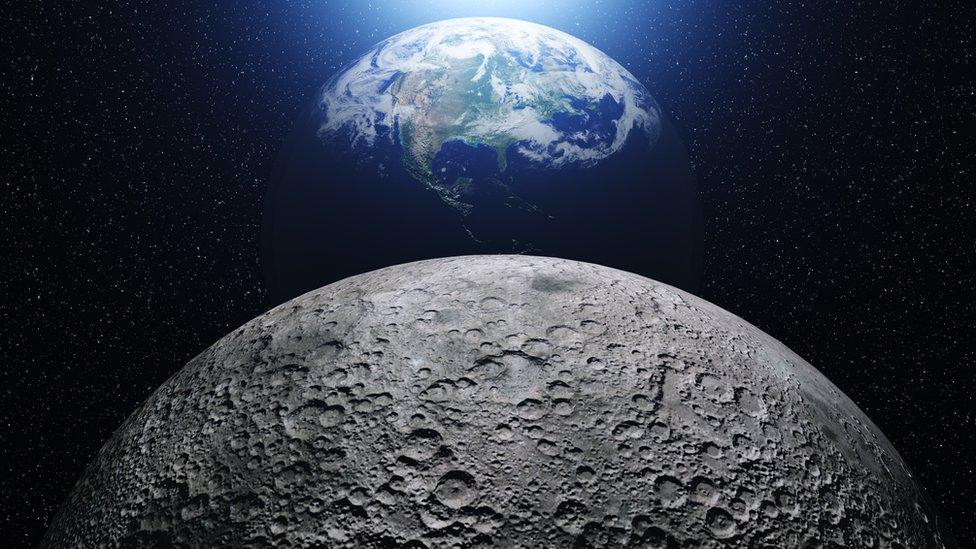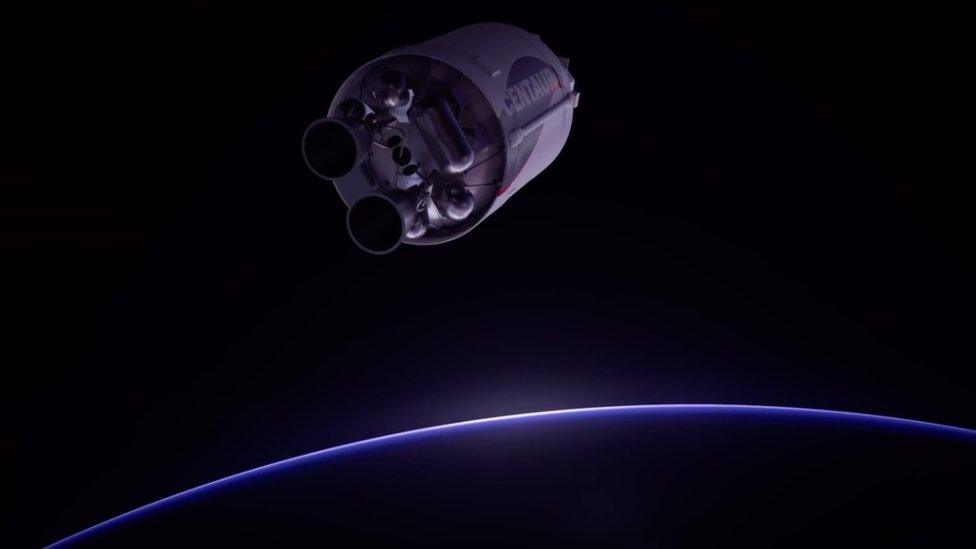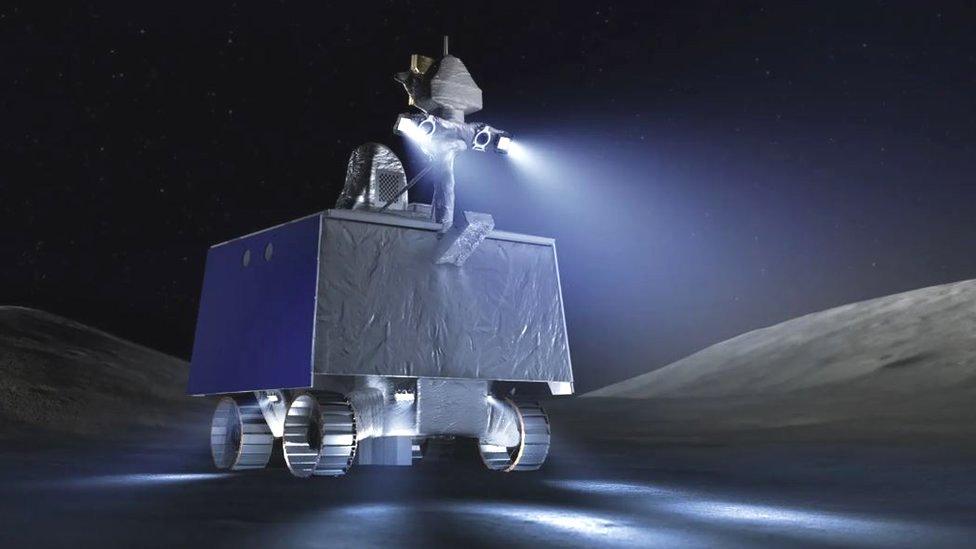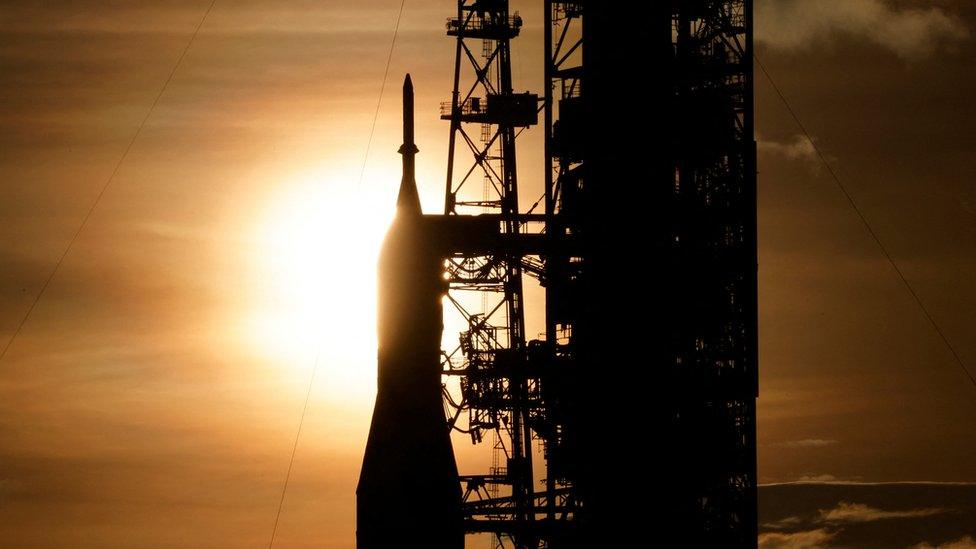Peregrine mission's Moon landing now 'impossible' due to fault, say engineers
- Published
- comments

The company hoping to land the first American-made spacecraft on the Moon in 50 years, says that's no longer possible because of a fault onboard.
The un-manned space craft, named Peregrine, had a problem pointing its solar panels at the Sun to generate power.
In trying to fix the issue the craft has lost "critical" amounts of fuel and time is running out to salvage anything from the mission, its engineers said.
Watch: Vulcan rocket lifts off to the Moon
Before encountering the fault, Peregrine launched successfully onboard a Vulcan rocket, that blasted off from Florida in the United States on Monday.
The lander is operated by private space company Astrobotic Technology. American space agency Nasa had paid for five pieces of scientific equipment to be carried onboard for experiments on the lunar surface.

A successful landing, scheduled for 23 February, would have marked the first time a private company had landed on the Moon's surface and would have been the first American made spacecraft on the surface of the Moon since the Apollo 17 mission in 1972.
But that's no longer possible now and Astrobotic says it might not be able to control its spacecraft for much longer.

The Vulcan rocket in orbit around the Earth, shortly before separation from the Peregrine craft when the fault was identified
Peregrine's problems were identified soon after communications had been established following its separation from the top of the Vulcan rocket.
Engineers noticed the spacecraft was struggling to maintain a stable lock on the Sun, meaning its solar cells were not receiving a constant supply of sunshine to recharge the onboard battery.

The 1.2-tonne Peregrine spacecraft
Astrobotic's engineers eventually identified the cause as a failure in the propulsion system, and although they were able to successfully re-point the spacecraft and charge the battery, it was evident, the company said, that Peregrine had lost a significant amount of fuel in the process.
As a result Astrobotic said it was reassessing its mission goals, which means looking at what could still be achievable in the circumstances.
"At this time the goal is to get Peregrine as close to lunar distance as we can before it loses the ability to maintain its Sun-pointing position and subsequently loses power," it said.

Not since Apollo 17 in 1972 has the US soft-landed a spacecraft on the lunar surface
Peregrine is just one of several spacecraft attempting to land on the lunar surface in 2024. As many as eight different projects, including those from Japan and China, could land on the Moon this year.
Nasa is also offering members of the public the chance to have their name in space as part of its next mission to the Moon in late 2024.
The Viper, Nasa's first robotic moon rover, will journey on a mission to unexplored parts of the Moon's south pole.
Nasa's Artemis II mission is also scheduled for later this year, when a four-person crew will blast off in November, orbiting the Moon before returning home.
- Published6 January 2024

- Published4 September 2022

